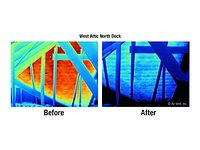
Most people think of being smart as knowing a lot of stuff. I have a different definition of smart. It’s knowing what you don’t know.
Although the world is filled with self-styled know-it-alls, the truth is that nobody knows more than a tiny fraction of all there is to know about any given subject. Truly smart people understand that. The smartest people never stop trying to learn more.
People with Ph.D.s after their names keep trying to fill their gaps in knowledge by reading more and more books. That’s not a bad thing to do, but it’s not the only way to acquire knowledge. People in your business need “street smarts” more than book learning for the most part. These street smarts include information about your tools and equipment, about the business of your suppliers and, especially, knowledge of your customers. The better you understand their wants and needs, the better you can give them what they want and need.
Excuse me. I misspoke. What I meant to say was “… the better you can sell them what they want and need.” You’re not in business to give anything away. And the more you can find out about plans and specs, or market conditions, or schedules, or anything else related to the project at hand, the better able you will be to sell your services at a profit.

The most important thing to remember about questioning is that it is intended to gain information. Be persistent. Ask question after question until you fully understand what you’re trying to learn - or, until the person being questioned points you to someone better able to answer it. Don’t accept partial or incomplete answers that leave you hanging. Example:
“Can we start next week?”
“I guess so.”
The next logical question would be: “Are you certain?”
Five Types of Questions
How you ask a question has a lot to do with the quality of the answers you receive. Here are five types of questions and examples of situations where each would apply.
1. Open-ended questions lead to long responses. Open-ended questions cannot be answered with a simple “yes” or “no,” a number, or some other short response. Examples of open-ended questions are:
- “How does your company want to be billed?”
- “What problems have you encountered with previous contractors?”
- “What do you feel they could have done better?”
Open-ended questions elicit the most information of any of the types we will discuss here. Use open-ended questions extensively when qualifying prospects or during the bid process when you want to find out as much detailed information as possible.
Many open-ended questions begin with the words “what,” “why” or “how.” Examples include:
- “What is it you expect this project to accomplish?”
- “What are the most important things?”
- “What are you most concerned about?”
2. Closed-end questions can be answered briefly. Closed-end questions are not intended to make the client talk a lot. You basically ask closed-end questions to obtain specific information or confirm facts.
Closed-end questions usually can be answered with a yes or no, or with a number or brief statement. For instance:
- “How often do you need work like this?”
- “Who do you usually have do the work?”
- “When was the last time?”
Probing questions are a type of open-ended question. They are good to use when an open-ended response does not provide enough information that you need. Examples:
- “Please tell me more about the contractor evaluation program you just mentioned.” (This imperative sentence serves the same purpose as a question. A statement does not have to be followed by a question mark to qualify as a “question.”)
- “You say the last contractor caused a number of problems. What kind of problems?”
- “What happened after that?”
4. Clarifiers make sure of understanding. The clarifier may not be a question at all. It may be simply a statement to make sure you have properly understood the customer. Sometimes it’s a matter of paraphrasing something they said, such as:
- “Did I hear right that a project delay could cost you $10,000?”
- “You expect the job to be finished in a month?”
- “As I understand it, you prefer to pay for the job in phases?”
- “Do you want this order delivered, or will you pick it up?”
- “Which color would you like?”
“Don’t you think it would be best for us to start this project next week?”
Asking the Right Questions
Timing is everything when asking questions. You must develop a sixth sense for when to ask each type of question.
For instance, as noted, the open-ended question is the type used most frequently by salespeople, especially when prospecting and qualifying. It gives you the most information in the most unbiased way.
The closed-end question is useful for obtaining factual information such as time, quantity and yes or no responses.
Probing questions are a way to uncover layers of important information beyond the first open-ended answer.
Clarifiers are used to make certain you understand important points.
Leading questions help nudge customers in a desired direction. Asking the right question at the right time serves its purpose only if you listen carefully to the answers. That will be the subject of next month’s article.


